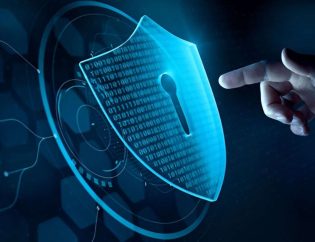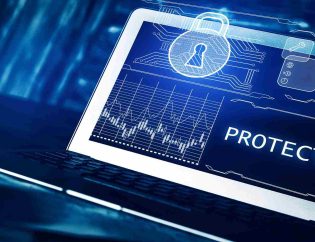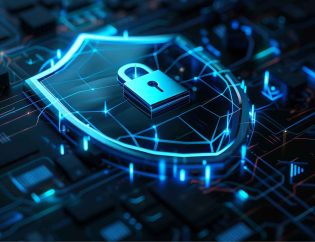
That’s where Endpoint Detection and Response (EDR) technology comes in. EDR solutions offer advanced features that monitor endpoint activities, detect suspicious behavior and respond instantly to potential ransomware threats. By incorporating the expertise of an Endpoint Security Company, businesses can access cutting-edge tools and strategies to prevent ransomware attacks from escalating. In this article, we’ll dive into how EDR ransomware detection works and why it is an essential part of any modern cybersecurity strategy.
Table of Contents
Understanding EDR Ransomware Technology
Endpoint Detection and Response (EDR) technology is designed to monitor and analyze endpoint activities in real-time. Endpoints are devices like computers, servers and smartphones that connect to a network. Unlike traditional antivirus software, EDR ransomware solutions look for unusual behavior patterns that might indicate a ransomware attack.
For example, EDR tools can detect when a file is being encrypted without permission or when a program is trying to access sensitive data. These tools provide an extra layer of protection by identifying and stopping threats before they can do significant damage.
How EDR Ransomware Detection Identifies Threats Early
EDR ransomware detection works by using advanced algorithms and machine learning to analyze endpoint activities. Here’s a breakdown of how it detects threats early:
Real-Time Monitoring:
Tracks all activities happening on devices connected to the network.
Behavioral Analysis:
Looks for unusual behaviors, such as unauthorized file changes or rapid file encryption.
Threat Intelligence:
Uses a database of known ransomware attack patterns to compare and identify potential threats.
Instant Alerts:
Sends notifications to IT teams as soon as suspicious activity is detected.
This proactive approach ensures that threats are identified and stopped before they can spread, saving businesses from downtime, data loss and financial damage.
Key Features of EDR for Ransomware Defense
EDR solutions come with several advanced features that make them effective against ransomware attacks. Below are the key features and their benefits:
Advanced Detection Algorithms:
Identify even new and unknown ransomware threats, also known as zero-day attacks.
Automated Response:
Automatically isolates infected devices to stop ransomware from spreading across the network.
Forensic Capabilities:
Records detailed logs of the attack, helping businesses understand how it happened and how to prevent similar incidents in the future.
Threat Hunting:
Actively searches for hidden threats in the system to ensure complete protection.
Why These Features Are Essential:
Key Features and How They Protect
| Feature | How It Protects |
|---|---|
| Advanced Detection | Finds threats before they can cause significant harm. |
| Automated Response | Reduces the time it takes to contain an attack. |
| Forensic Capabilities | Provides valuable insights for improving defenses. |
| Threat Hunting | Eliminates hidden threats to prevent future attacks. |
Why Businesses Need Ransomware EDR Solutions
Ransomware attacks can have devastating consequences for businesses, including financial losses, reputational damage and operational disruptions. Ransomware EDR solutions are designed to help businesses stay protected in the following ways:
Protecting Critical Data
EDR ransomware solutions detect and stop unauthorized file encryption, protecting customer records, financial data, and trade secrets from ransomware attacks before damage occurs.
Ensuring Business Continuity
EDR isolates infected devices immediately, preventing ransomware spread and ensuring the rest of the network stays operational, minimizing disruption and maintaining smooth business processes.
Reducing Costs
By stopping ransomware early, EDR reduces expenses related to ransom payments, data recovery, and downtime, making it a cost-effective cybersecurity solution for businesses.
Maintaining Compliance
EDR solutions help businesses meet GDPR, HIPAA, and PCI DSS regulations by protecting sensitive data and providing audit-ready logs, ensuring legal and regulatory compliance.
Customer Testimonial:
“Since adopting an EDR ransomware solution, our business has been able to stay ahead of threats. We no longer worry about downtime or data breaches.” – Sarah K., IT Manager
Real-Life Example of EDR Stopping a Ransomware Attack
Imagine a business noticing that a user’s computer is encrypting files without authorization. Without EDR, this ransomware could spread to other systems within minutes. However, with EDR ransomware detection, the following steps happen:
Real-time monitoring and automated response are game-changers in ransomware defense. Learn more about EDR ransomware protection. #EndpointSecurity
— Hyper Secure (@HyperSecure) December 10, 2024
FAQs
1. What is EDR ransomware?
EDR ransomware refers to Endpoint Detection and Response solutions designed to detect and stop ransomware attacks by monitoring endpoint activities in real-time.
2. How does EDR ransomware detection work?
It uses behavioral analysis and threat intelligence to identify unusual activities that could indicate a ransomware attack and stops it before it escalates.
3. Why is EDR ransomware better than traditional antivirus software?
Traditional antivirus focuses on known threats, while EDR can detect and respond to unknown and advanced threats like zero-day ransomware.
4. Can EDR ransomware solutions work with existing security systems?
Yes, most EDR solutions integrate easily with firewalls, SIEM tools and other security infrastructure to provide comprehensive protection.
5. How does EDR help prevent ransomware spread?
EDR isolates infected devices immediately, preventing ransomware from reaching other endpoints and critical systems.
6. Are EDR ransomware solutions cost-effective?
Yes, the cost of implementing EDR is much lower than the financial losses caused by a ransomware attack.
Conclusion
EDR ransomware technology is critical for businesses facing today’s sophisticated cyber threats. By offering advanced detection, real-time monitoring and automated responses, EDR solutions help businesses stop ransomware attacks before they escalate. At Hyper Secure, we provide customized EDR ransomware detection solutions that safeguard your business from costly breaches. Contact us today to secure your endpoints and protect your business.








